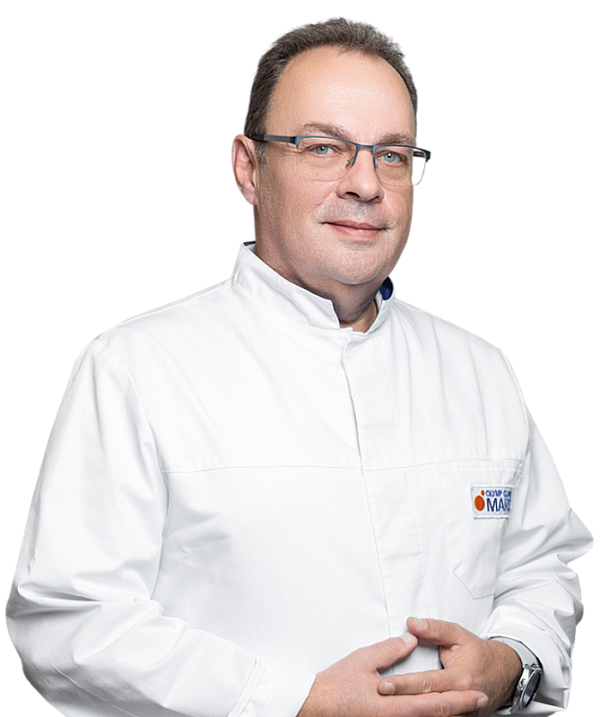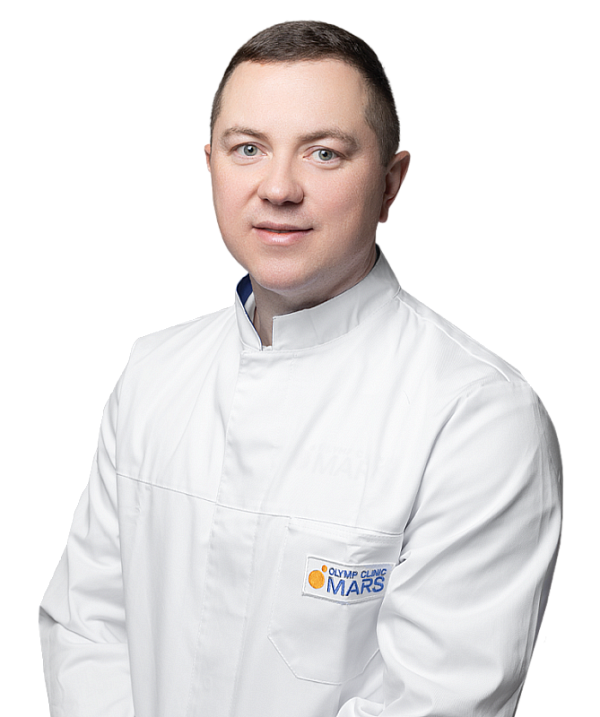Salivary gland surgery
Surgical procedure designed to remove either the entire salivary gland or a portion of it, typically in cases of inflammation, cysts, or tumors.

The human body is home to three pairs of major salivary glands (parotid, submandibular, and sublingual) and numerous minor ones. They are susceptible to inflammatory diseases (sialadenitis), cysts, and tumors. These conditions often manifest as pain, swelling, and impaired saliva flow and require surgical intervention.
Some cases may require urgent salivary gland surgery, particularly in cases of suppuration or pain. Advanced surgical techniques can address the underlying cause of the condition, preserve facial nerve branches, and minimize aesthetic damage.
Before the procedure, patients are required to consult with a surgeon and undergo testing. The examination includes a complete blood count, biochemical tests, a coagulogram, infection tests, and ultrasound, CT, or MRI of the affected area. We provide comprehensive health assessments and consultations with related specialists.
Removal of stones in the gland involves making an incision in the mucous membrane of the oral cavity or the skin on the outside. Tumors and cysts are removed by excising the adjacent tissues and parts or all of the gland, taking care to preserve the facial nerve's branches. In case of purulent complications, the abscess is opened, cleaned of necrotic tissues, and drained. Some patients may require a subtotal or total parotidectomy, which involves the removal of the parotid gland along with the facial nerve. Following the procedure, sutures and a pressure bandage are applied, and in some cases, drains are installed.
We use the latest surgical equipment, including microscopic technology, electrosurgical instruments, and navigation systems. All procedures are done in well-equipped operating rooms where we can monitor the patient's vital functions.
Following surgery, patients are advised to rest, apply local cooling, and follow a light diet. Physical therapy is provided as needed to reduce swelling and speed healing. If the gland is removed, patients are advised to get regular checkups. The remaining glands typically compensate for the absent gland.
Benefits
Tumor or affected tissue removal
Surgeries are visually monitored, considering facial anatomy.
Lower complication risk
Minimally invasive techniques help minimize postoperative risks.
Facial aesthetics preserved
Incisions are made carefully to preserve the appearance of the tissues.
Salivary gland surgery
Patients are treated by several specialists simultaneously, including a maxillofacial surgeon, an otolaryngologist, and a neurologist, and others.
Врачи
Смотреть всех врачейMaxillofacial surgeon. Candidate of Medical Sciences.
Similar referral activities
Post-traumatic facial deformities treatment
Surgical restoration of facial bones and soft tissues after trauma to restore function and appearance.
Maxillofacial purulent inflammations diagnostics and dissection
Surgical treatment of abscesses, phlegmons, and other acute inflammations with drainage and sanitation.
Naso-orbital reduction and osteosynthesis
Facial skeleton restoration surgery involving nose and eye socket fractures.
Cheekbone reduction and osteosynthesis
Surgical restoration of the zygomatic bone using titanium plates to fix the fragments.
Lower jaw osteosynthesis
A surgical procedure designed to repair broken bones in cases of mandibular fractures.

